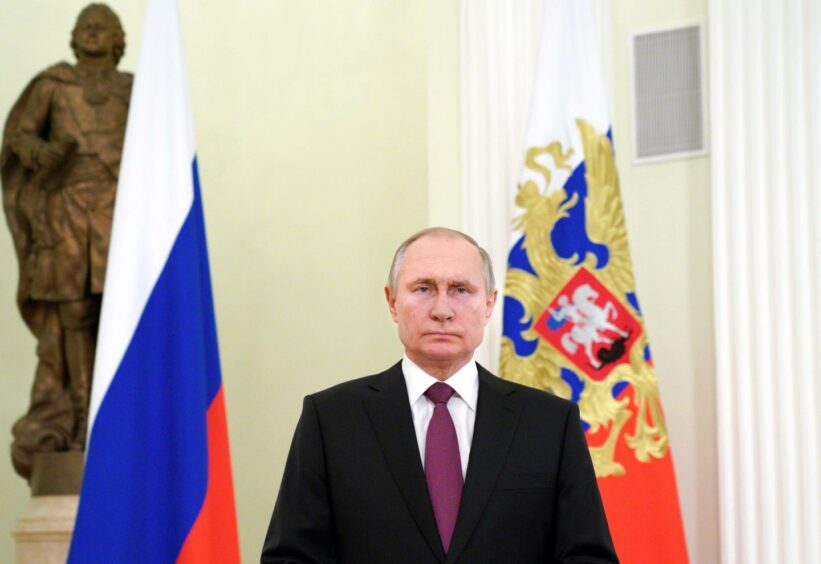
Europe is too reliant on Russian gas. In fact, Europe is too reliant on gas full stop but it being mainly Russian gas makes it even more problematic.
Prices are soaring and supply remains uncertain despite Vladimir Putin saying Russia could help to ease Europe’s energy crisis.
Jack Sharples, a research fellow at the Oxford Institute for Energy Studies, who is an expert on Russia and Gazprom says, “we are seeing a continued shortfall in what we would normally expect in terms of Russian pipeline supply to Europe.”
The International Energy Agency has already accused Russia of cutting European gas supplies by a third.
This is despite the fact Russia topped up its own storage in November which meant it could have then increased European supplies.
So, what’s going on? Well firstly the Russians are quite happy to weaponise gas supply especially now as they are threatening Ukraine with invasion, to prevent what they claim is further NATO expansion towards their borders. Ironically, about a third of Russian gas gets into Europe via a pipeline that runs through Ukraine. I’d place a large bet on that being one of the first casualties in the event of an invasion.
Secondly, there is the new Nord Stream 2 pipeline which Russia is pressurising Europe into using. The European Commission said on Thursday that they were looking into Gazprom’s behaviour as some analysts raise concerns that Russia’s actions could be aimed at putting pressure on Europe to green light the new Nord Stream 2 pipeline. Naughty stuff.
Putin said in late December that Nord Stream 2 could help to ease gas prices while adding that Gazprom had increased its gas exports. But others have said that temperatures are low in Russia as well, leading to potential supply issues.
The UK is also a net importer of gas because the North Sea and Irish Sea now only provide around 40 per cent of its total demand. As a consequence, we have to import heavily from other countries, including Norway, Qatar, Russia, Trinidad and Tobago, Egypt and Nigeria. We only get less than 5% of our supply from Russia.
The Russian supply “problem” coupled with a particularly strong demand in Asia for Liquified Natural Gas (LNG) meaning less LNG reaching Europe, has meant the wholesale price of gas has soared and at the time of writing is still going up.
As the UK still uses a lot of gas for generation this has meant the wholesale cost of electricity has also risen dramatically. Some forecasts are now suggesting both gas and electricity bills could rise by up to 50% by spring 2022. Not funny.
The regulator OFGEM has already agreed that the price cap which sets a limit on the maximum amount suppliers can charge for each unit of gas and electricity you use, and sets a maximum daily standing charge, will rise from its current £1,277 per annum. By how much it will rise still hasn’t been completely agreed but analysts Cornwall Insight say that the cap will rise by 51% in April – that’s £1,925/year for average users.
There can be little doubt that, coupled with the increasing general inflation and reductions in some benefits, for some this will be disastrous. Watch the numbers of those in fuel poverty rocket throughout 2022.
In France President Macron has ordered EDF to cap electricity price rises at no more than 4% to protect consumers. He can do this because the French state is the majority owner of the biggest electricity supplier. Sadly, for ideological reasons the UK’s electricity industry is privatised so the UK government cannot do this. Another lesson we should learn perhaps.
However, renewable energy prices – wind, solar, tidal – have hardly moved and been below the wholesale price of electricity for a while.
What this tells me is that Scotland could go a long way to solving this problem by taking a lot of renewables off grid, not connecting a large part of the ScotWind and future project capacity to the grid but using it instead for hydrogen production.
That Green Hydrogen could then be used in conjunction with the planned Blue Hydrogen production from indigenous gas resources to progressively displace natural gas and oil for heat, other domestic use and of course transport in Scotland and most importantly, to export to Europe to help them displace Russian gas faster.
As of now the Scottish Government plan is to produce 5 GW of Hydrogen by 2030 and 25 GW of Hydrogen by 2045. We need to accelerate that.
ScotWind will give us an additional 25GW of electrical capacity, but we should kick off the planning for ScotWind 2 now.
Scotland can already generate well over 90% of its demand from renewables – mostly wind -under the right conditions so you could argue ScotWind is surplus to requirements.
Using most of ScotWind and all ScotWind 2 for distributed hydrogen production and storage makes perfect strategic sense. We solve our own Net Zero issues and by exporting the excess we can help wean our friends in Europe off Russian gas.
Europe is of course itself already developing large scale Green Hydrogen projects because they have the technology to do it. Here then is the flaw in my argument in that as I have pointed out many times, we don’t have the technology to do it and the rapidly increasing demand for that technology – especially electrolysers – means inevitable shortages unless we finally get on and do it ourselves.
Lots to do – so we need to start now. The economic opportunity is too huge to miss and removing a political threat for ever means this is one of those rare win, win situations.
Dick Winchester is a former subsea engineer and an adviser to the Scottish government on the energy transition.
Recommended for you
